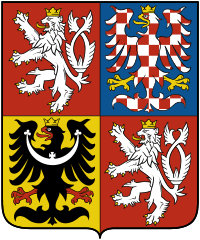Koleč Castle preservation

Published
In the small village Koleč there is hidden a remarkable building - the Koleč Castle. This small aristocratic residence was close to the removal from the Central Register of Cultural Heritage and complete demolition due to the long-term unsatisfactory condition. Thanks to the considerable effort and interest of several local patriots, the castle not only been saved and reconstructed, but there was also built a unique museum of beekeeping, which has a long tradition in village Koleč.
We have visited the Koleč Castle as part of our presentation of interesting projects from the past EEA and Norway Grants periods. Our guide was Mrs. Magdalena Jakubíčková, the founder of the Koleč Endowment Fund. The only aim of the Fund from its beginning in 20017 was to save the castle in Koleč. The history of the castle dates back to the 15th century, when a fortress with a farmyard stayed there. Later, around 1600, the fortress was rebuilt into a renaissance castle, but it burnt down during the Thirty Years' War.
Soon during the war was restored. The ceilings of the ground floor of the side wing come from that time as well as the preserved granary in front of the castle, including the original valuable roof. At the beginning of the 18th century, parts of the renaissance fortress were incorporated into the new building of a generously composed Baroque castle. However, the entire Koleč estate became part of the Habsburg property in the 19th century. After 1918, this property was confiscated and in a castle area a state farm was operated. Already in the time of socialism the castle was in a bad condition, which dramatically got worse after 1989 when privatization was rather unsuccessful. The new owners did not have the financial resources to repair it and the castle was in an emergency condition. The owners instead of saving it, they pressed to abolish the monument protection and demolish it. Thanks to the buy-out in a forced auction by the Koleč Foundation in July 2008, the better times for the castle have started.
All the debts could be repaid from the sale of unnecessary parcels and the roof of both castle wings including the adjacent church were quickly replaced. Minor subsidies from the Ministry of Culture, but also collections and volunteer work contributed to the rescue. However, significant resources were missing. In 2014 the project “Castle Koleč - Museum of Beekeeping” succeeded among a large number of applications in the open call of the Program of Cultural Heritage and Contemporary Arts and received a grant over 16 million Czech crowns from the EEA and Norway Grants. The project consisted of a comprehensive reconstruction of the western wing of the castle and opening of the beekeeping museum. The work itself started in June 2015 and finished in July 2016.
The work was not easy as unexpected obstacles and challenges emerged as works progressed. Whether it was the original wooden ceilings dated to 1640, which managed to renovate or a hidden staircase.
Just before the opening ceremony in July 2016, the renovated castle wing and the Beekeeping Museum were opened to the public. And why beekeeping? This field has a long and rich history in Koleč and its surroundings. In 1879, the Švarc family founded a factory for beehives and beekeeping needs, which was the first of its kind in Bohemia. The museum has several rare specimens. Some are over 80 years old. The collection was also helped by volunteer donors from all over the Czech Republic, who provided surviving hives, honey extractors, tools needed for honey production and bee breeding, old magazines and specialized literature. The Norwegian partner Norges Birøkterlag, who also prepared a part of the exhibition - beekeeping from a Norwegian perspective, made a significant contribution to the creation of the museum as a part of the supported project. Already for 11 years the Honey Fair takes place in the castle area.
“The castle is partially saved, but we still have a lot of work to do. We have prepared a project for the reconstruction and restoration of the rest of the castle and the adjacent church. Another ambition is the restoration of the castle garden, where we would like to have bees and produce castle honey as a supplement to the museum. We would also like to engage local children who could have a beekeeping hobby group. We are also count with involvement of our Norwegian partner”, says Mrs. Jakubíčková.
We will keep our fingers crossed and believe that the castle will soon be completely renovated and in its original appearance.

